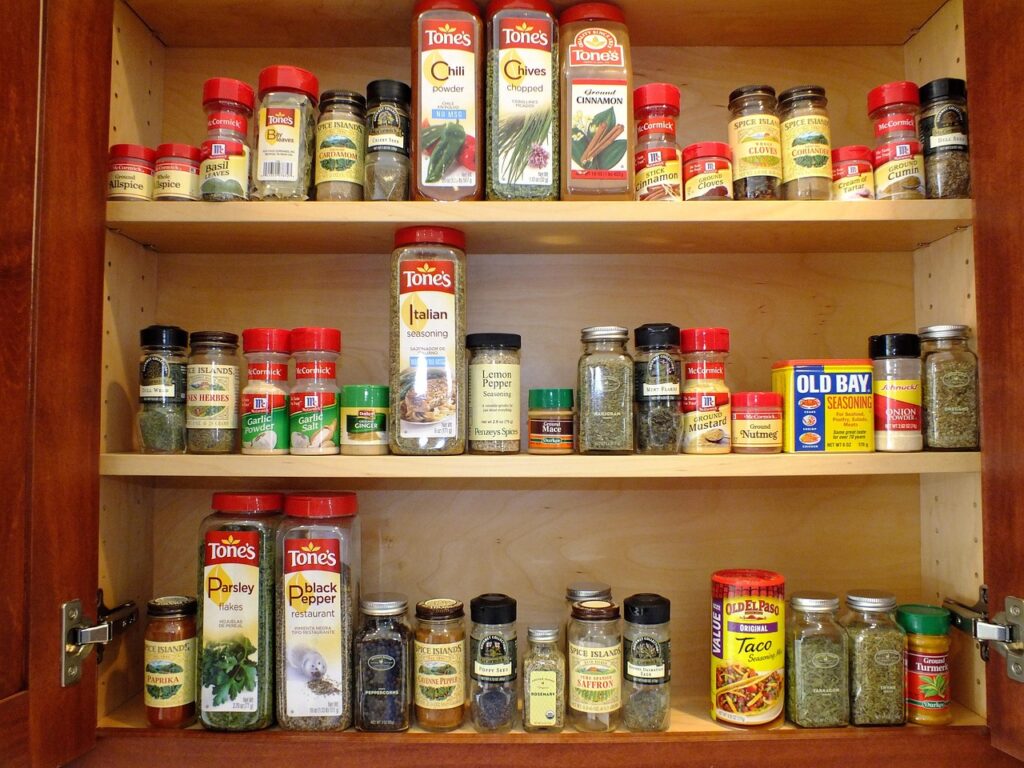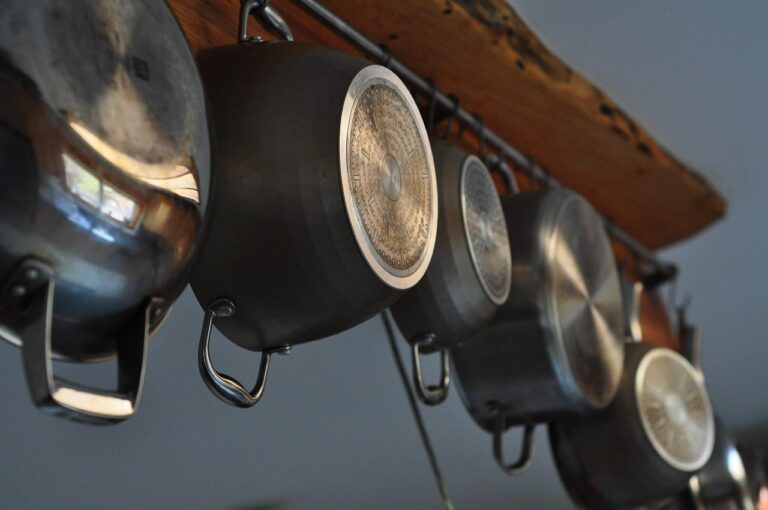A cramped pantry can turn meal prep into a scavenger hunt. When cans hide behind boxes and spices disappear into dark corners, you might end up buying duplicates or letting food expire. The good news is that a few strategic changes can help transform even a tight pantry into a space where everything has a clear home and stays visible.
Why Small Pantries Need Extra Attention

Limited square footage means every inch counts. Without a solid system, items tend to pile up and create chaos. A small pantry often works better when you can see most items at once, which requires intentional placement and smart storage solutions that maximize vertical space and keep frequently used items within easy reach.
1. Clear Out and Group Like Items First
Start by removing everything from your pantry. Toss expired food and donate unopened items you won’t use. Group similar items together—baking supplies in one pile, breakfast foods in another, and snacks in a third. This step shows you exactly what you’re working with and reveals which categories need the most space.
Wipe down shelves before restocking. A clean slate makes the organizing process feel more intentional.
2. Use Clear Containers for Staples
Transfer flour, sugar, rice, pasta, and cereal into clear, airtight containers. Visibility helps eliminate mystery and makes it easier to track what you have. Label each container with the contents and expiration date using a label maker or permanent marker.
Clear containers also stack neatly and create uniform rows. This tends to make shelves look cleaner and can maximize usable space.
3. Install Adjustable Shelving
Fixed shelves often leave awkward gaps that waste vertical space. Adjustable shelving lets you customize heights based on what you store. Place shelves closer together for shorter items like canned goods, and create taller spaces for cereal boxes.
If you rent or can’t install permanent fixtures, stackable shelf risers work as an alternative. They can roughly double your usable surface area without drilling holes.
4. Add Door-Mounted Storage
The back of your pantry door offers valuable extra space. Mount an over-the-door organizer or install narrow wire racks to hold spices, seasoning packets, or small snacks. This approach can free up shelf space for bulkier items.
Choose organizers with adjustable pockets or baskets so you can customize the layout. Make sure the door can still close fully before committing to a specific product.
5. Store Heavy Items at Eye Level or Below
Place canned goods, jars, and other weighty items on lower or middle shelves. This keeps them easier to reach and can help prevent strain when grabbing ingredients. Lighter items like chips or popcorn can go on upper shelves where they’re still accessible but won’t cause issues if they fall.
Consider keeping daily essentials at eye level. This setup may reduce the time you spend searching and can make meal prep smoother.
6. Use Lazy Susans for Deep Shelves
Deep shelves can create spots where items disappear. A lazy Susan lets you spin to see everything stored in the back without moving other products. These rotating trays tend to work particularly well for oils and sauces.
Consider getting multiple lazy Susans if you have several deep shelves. Group items by category on each one so you’re not hunting through unrelated products.
7. Utilize Stackable Bins and Baskets
Wire or plastic bins keep loose items contained and help prevent avalanches when you pull something out. Use them for snack bags, seasoning packets, tea bags, or baking mixes. Stack bins vertically to take advantage of unused height.
Choose bins with handles for easier removal. Pull the whole basket out when you need something instead of digging around.
8. Create Zones by Meal Type or Usage
Designate specific areas for breakfast items, baking supplies, snacks, and dinner staples. Zones can create mental shortcuts that help you find things faster. You might automatically know where to look for oatmeal or where to return pasta after shopping.
Consider keeping grab-and-go snacks in a lower zone if you have kids. This can encourage independence and may reduce the number of times you need to help.
9. Label Everything Clearly
Labels aren’t just for containers. Mark shelves or bins with categories so everyone in your household knows where things belong. This simple step can help prevent items from migrating to the wrong spot over time.
Use a consistent labeling style throughout your pantry. Matching fonts and colors create a cohesive look that feels more organized.
10. Keep a Narrow Rolling Cart Nearby
If your pantry is truly tiny, a slim rolling cart can act as an overflow station. Use it for items you buy in that don’t fit inside. Park it next to your pantry or tuck it into a nearby closet.
Choose a cart with multiple tiers to maximize vertical storage. Just keep in mind that you’ll need to maintain this space too, so try not to let it become a dumping ground.
What to Skip
Avoid buying too many matching containers at once. Start with a few for your most-used items and expand as needed. Don’t overcomplicate your system with excessive categories or overly specific zones. The simpler your setup, the easier it tends to be to maintain. Skip organizers that don’t fit your actual shelves—measure before purchasing to avoid returns and wasted money.
Final Thoughts
A well-organized small pantry can make cooking less stressful and help you use what you already own. Once you set up zones, add visibility with clear containers, and use vertical space thoughtfully, your pantry may function more efficiently than before. Maintaining the system takes just a few minutes each week—a quick reset after grocery shopping keeps everything in its place. Now you can spend less time hunting for ingredients and more time enjoying your kitchen.



